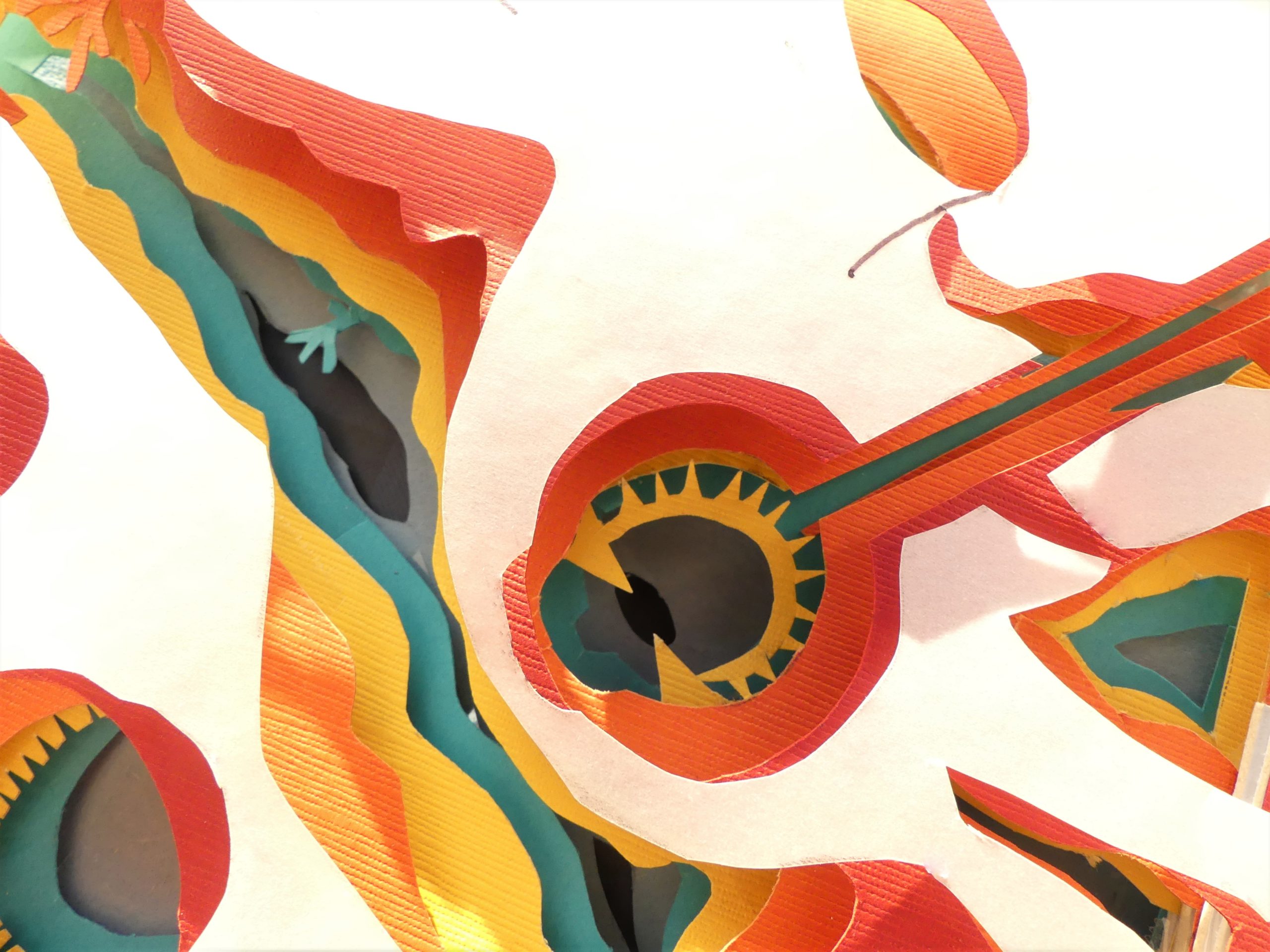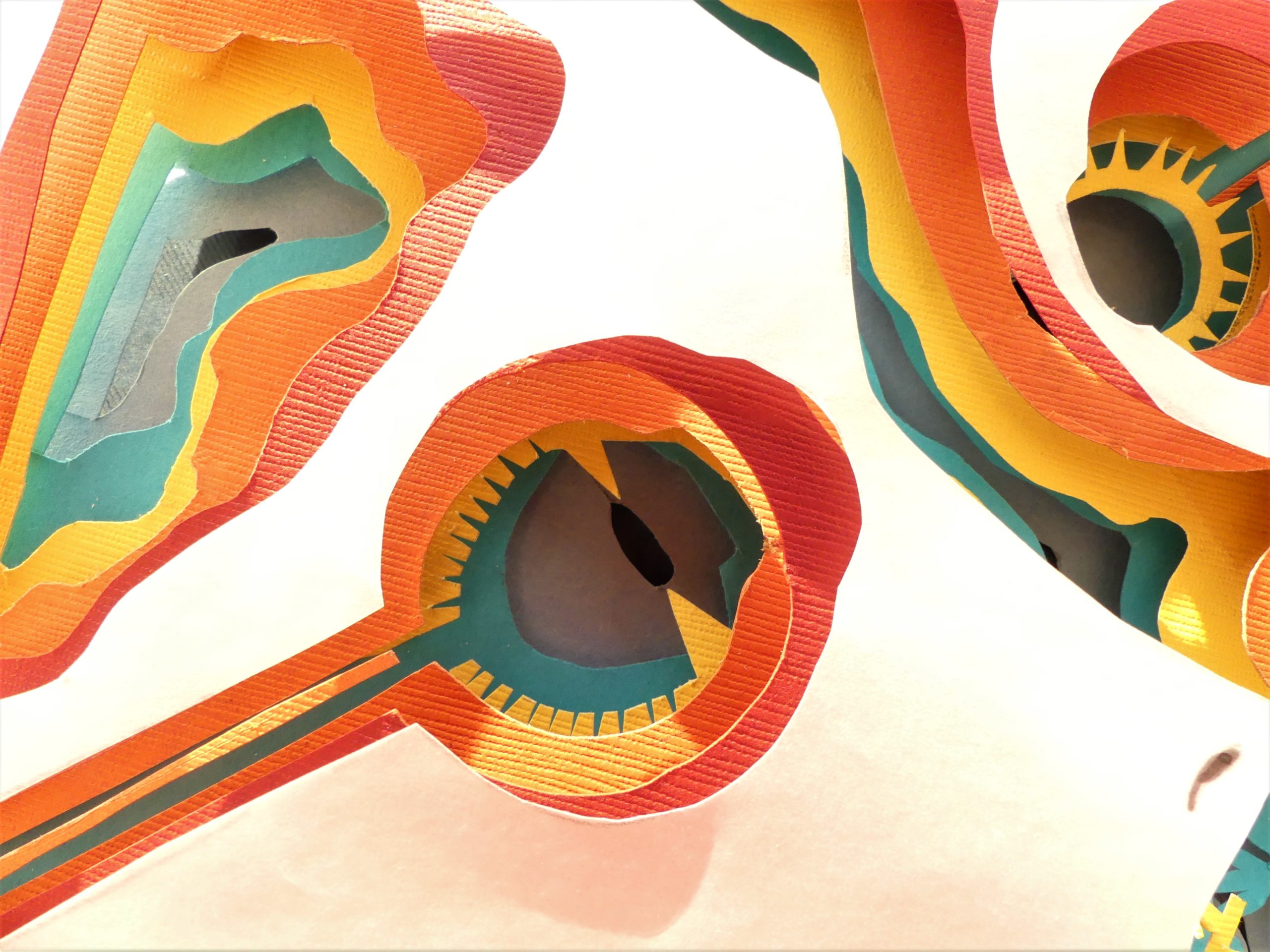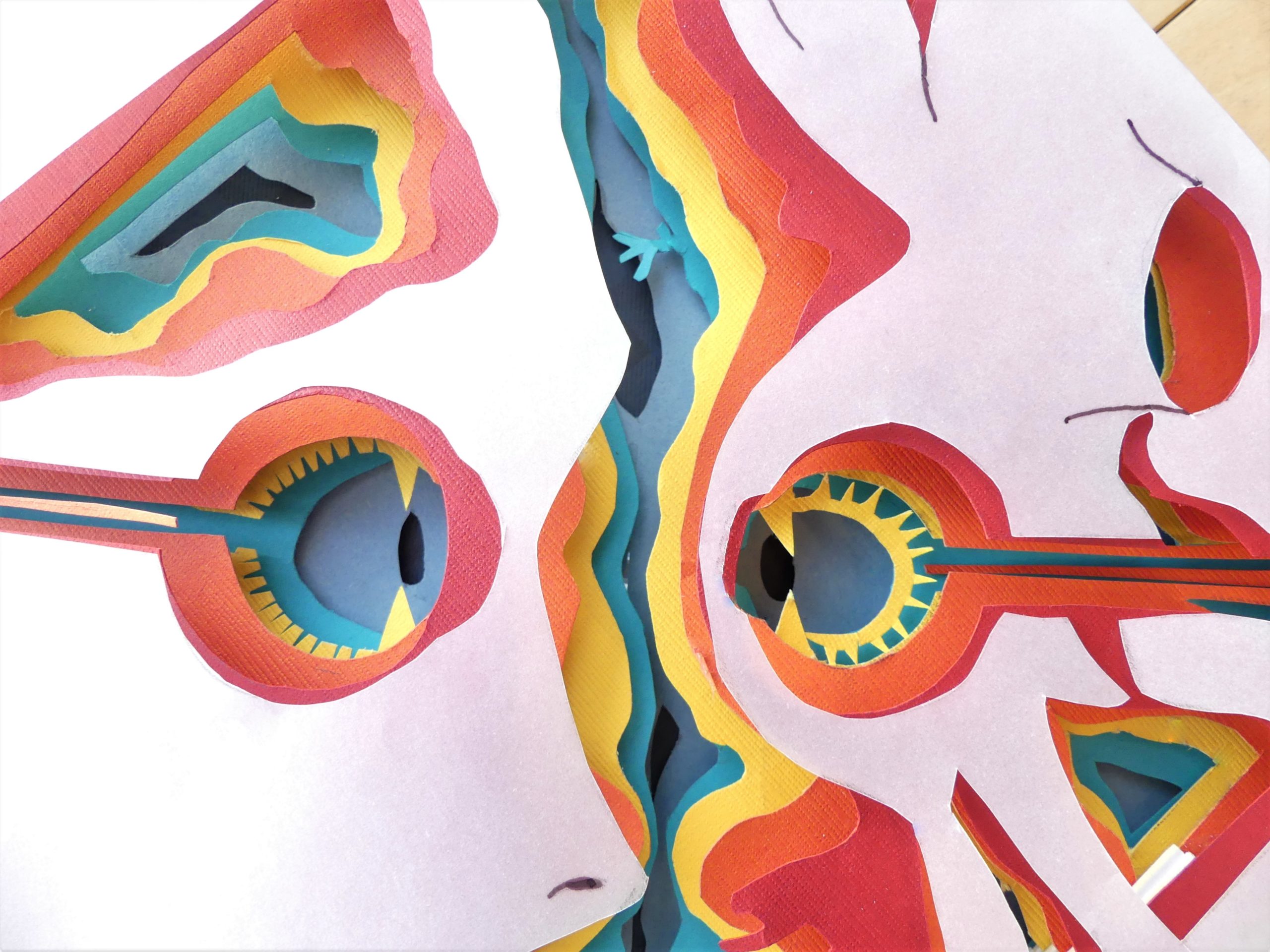2022 Best in Sculpture – Haewon Hwang




The Eye Contact
Paper Craft
Convergent evolution refers to distinctly related species having similar traits due to exposure to similar evolutionary pressure. This papercraft depicts the eye contact between a human and an octopus, who acquired a similar single-lens ‘camera eye’ structure through different evolutionary processes. The similarity of the two specie’s eyes is depicted with the use of the same color in structures, while the difference, the direction of photoreceptors in the retina, was also depicted with teal-blue paper. The same color used in the background behind both figures symbolizes the similar evolutionary pressure that led to the homogeneous structure of the eyes.
Convergent evolution refers to the species that are genetically distinct but have similar traits. Although the traits evolved through different processes, evolutionary pressure lead to a homogeneous outcome. For example, the eyes of molluscs and vertebrates share a single-lens camera eye structure with the cornea, retina, optic nerve, and other parts although their last shared ancestors lived more than 500 million years ago.
This artwork depicting the convergent evolution of human and octopus eyes was constructed in 3D with paper layers to represent the accumulation of evolutionary pressure over a long period. An upside-down octopus and a human is looking eye-to-eye at each other, heading toward different directions in the representation of the different evolutionary track they are on. The eyes of the two species are depicted almost symmetrically except for the retina. In real life, humans have ‘inverted’ retinas; their photoreceptors in the retina are pointed to the back of the eye, whereas the octopus has photoreceptors facing an opposite direction. In the artwork, the retina was created in a teal-blue color with exaggeration on the photoreceptors. For other parts of the eye, red was used for Cornea, orange for the sclera and the meninges surrounding the optic nerve, yellow for the ciliary body and choroid, pale blue for the vitreous body, and navy for the lens, respectively. The same colors were used for both eyes to emphasize the similarity in structure and the shared 69.3% of their eye-related genes.
The background behind the figures is asymmetrical in the representation of the different evolutionary pressure each species had to take, although the same colors are used on both sides to refer to the similarity of evolutionary pressure that led to homogeneous eye structures. Numbers, symbolizing communication, for humans and corals, symbolizing the sea, for the octopus was added to the background to emphasize the difference of the environment that each species evolved. The brain of each species can be found on the upper side of the eye of the human and lower side of the squid, respectively. They depict the biological differences of the physical structure between the species apart from the eye. Half-transparent material was used for the top layer representing the epidermis to convey that the artwork is diving below the surface of the species to its evolutionary process and to suggest that both species are going through their evolutionary process, instead of eternally fixated in current appearance.
The concept of convergent evolution has implications for our society. We are living in an era where diversity is celebrated but bringing people together to overcome challenges like a pandemic or climate change is still difficult. The difference in genes could be analogous to different identities of people and evolutionary pressure could be translated to shared challenges. Some species managed to find convergence over their different backgrounds. Maybe we can, too.
